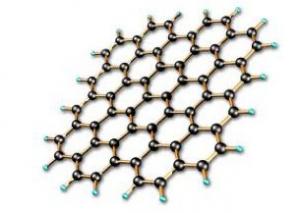Researchers at Japan's RIKEN have come up with a quick, efficient and potentially scalable way to produce large quantities of single-layer graphene by employing microwave radiation and a special ionic liquid solvent.

Recent recent efforts to manufacture graphene have focused on techniques involving liquid-phase exfoliation that mechanically agitate graphite particles dispersed in a solvent. However, this kind of physical shaking makes it difficult to produce structurally intact graphene sheets in high yields. Now, the RIKEN scientists have designed a method that activates graphite without mechanical force, that would give highly efficient exfoliation. They chose to irradiate graphite with microwaves because graphite is a good absorber of microwaves and releases heat after irradiation.
Successful exfoliation requires a way to keep the peeled materials separated; otherwise, the graphene layers will recoalesce into larger particles. Ionic liquidsâsalts that remain in a liquefied stateâare promising for this role because their charged nature generates strong attractions to graphitic surfaces. Previously, the RIKEN team used ionic liquids based on imidazolium, a positively charged, nitrogen-bearing ring, to exfoliate carbon nanotubes. But, preliminary studies revealed the need for a different chemical approach as the stacking that binds graphene layers in graphite was too strong for conventional imidazolium compounds to prevent aggregation of graphite. To overcome that stacking force, the scientists designed new ionic liquids inspired by the biological concept of multivalent interactions.
The results were impressiveâexfoliation occurred with a yield of 93% and practically all of the graphene produced was in the form of single layers. The researchers state that this work brings large-scale synthesis of high-quality graphene one step closer to becoming a reality.
In addition, the researchers found their oligomeric ionic liquid could dissolve enough of the exfoliated sheets to turn into a physical gelâa first for pristine graphene. This 3D material has an intriguing, magnetic-field-dependent structure that may someday lead to device applications.